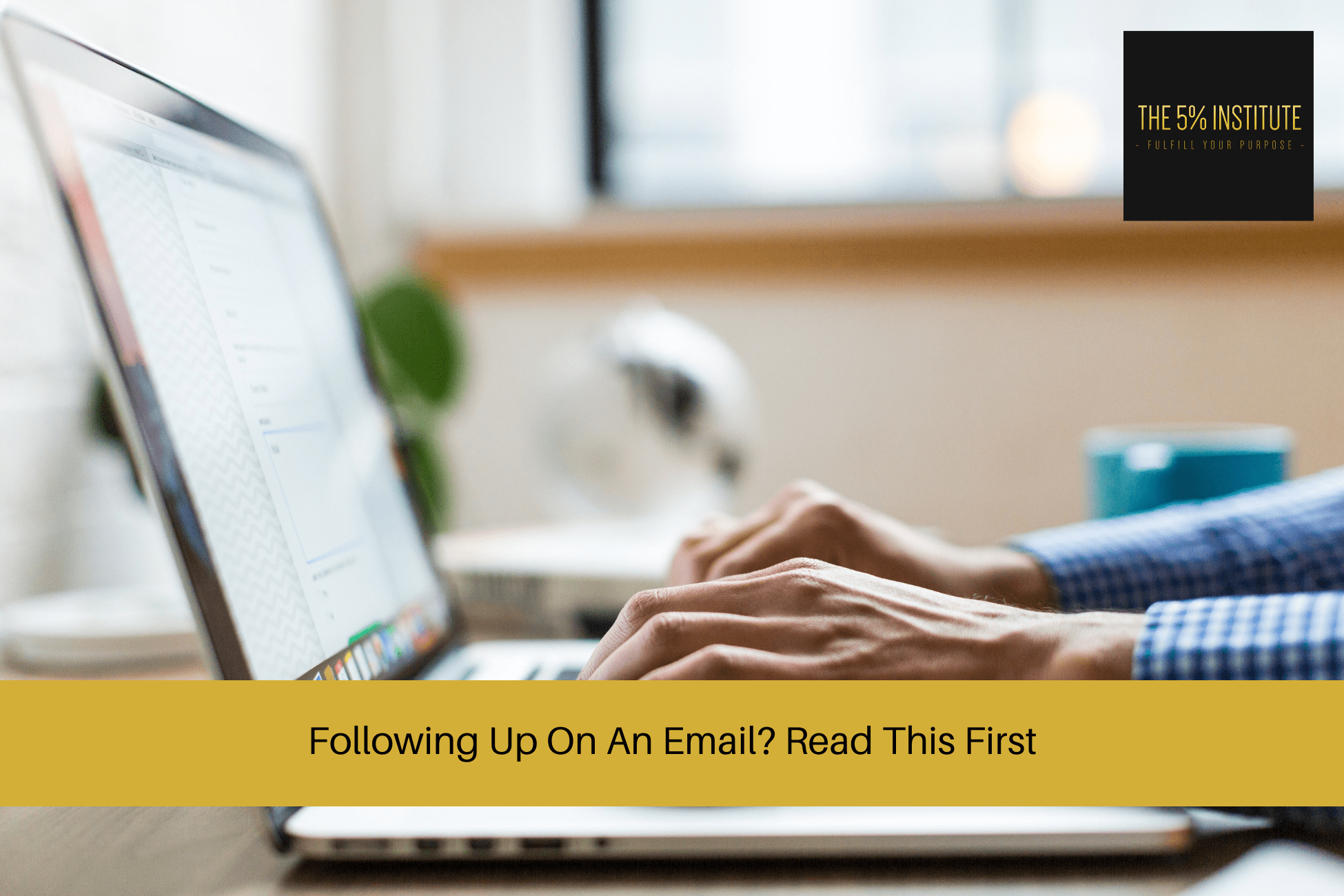
Following Up On An Email? Read This First
In today’s fast-paced digital world, email has become an integral part of our professional communication. However, sending an email doesn’t guarantee a response. To ensure effective communication, it’s crucial to master the art of following up on emails.
This article will guide you through the process of crafting compelling follow-up emails that increase your chances of getting a response.
The Importance of Follow-Up Emails
Follow-up emails play a vital role in business and professional communication.
They serve as gentle reminders, help maintain momentum, and demonstrate your commitment and professionalism.
Whether you’re reaching out to a potential client, following up on a job application, or connecting with colleagues, a well-crafted follow-up email can make a significant difference.
Crafting an Attention-Grabbing Subject Line
The subject line is the first thing recipients see when they receive your email.
To increase the chances of your email being opened, it’s important to create an attention-grabbing subject line.
Make it concise, relevant, and personalized to pique the recipient’s interest and encourage them to open your email.
Writing a Polite and Professional Opening
When composing the opening of your follow-up email, it’s essential to strike the right tone.
Begin with a polite and professional greeting, addressing the recipient by name if possible.
Express gratitude for their previous correspondence or any assistance they’ve provided.
This sets a positive tone for the rest of the email.
Recap the Previous Conversation
To provide context and jog the recipient’s memory, briefly recap the previous conversation or email exchange.
This ensures that the recipient understands the purpose of your follow-up and helps establish a connection between the current email and your prior communication.
Include Relevant Information or Attachments
If there are any important details or documents related to your follow-up, ensure they are included in the email.
This saves the recipient time and makes it easier for them to respond.
Attach relevant files or provide links to necessary resources to support your message effectively.
Set Clear Expectations
Clearly state the purpose of your follow-up email and the action you expect from the recipient.
Whether you’re requesting a meeting, seeking feedback, or providing additional information, make your intentions explicit.
This helps the recipient understand what is expected of them and facilitates a prompt and relevant response.
Provide Contact Information
Ensure that your contact information is readily available in the follow-up email. Include your name, phone number, and any other relevant contact details.
This makes it convenient for the recipient to reach out to you or find more information if needed.
Using Proper Etiquette and Tone
Maintaining a professional and respectful tone throughout your follow-up email is essential.
Avoid using jargon or overly formal language, as it can create a barrier between you and the recipient.
Instead, aim for a conversational style that is clear, concise, and easy to understand.
Proofread and Edit
Before hitting the send button, take the time to proofread and edit your follow-up email.
Check for any grammatical errors, typos, or formatting issues.
Ensure that your message flows logically and that the overall tone aligns with your objectives.
A well-written and error-free email enhances your credibility and professionalism.
Following Up on Unanswered Emails
If you haven’t received a response to your initial email, it’s important to follow up appropriately.
Give the recipient a reasonable amount of time to respond before sending a follow-up email.
When following up on unanswered emails, maintain a polite and friendly tone, and avoid sounding demanding or impatient.
Leveraging Email Tracking Tools
To gain insights into the effectiveness of your follow-up emails, consider using email tracking tools.
These tools allow you to track email opens, clicks, and responses.
By analysing this data, you can refine your approach and improve your email engagement rates over time.
Timing and Frequency of Follow-Up Emails
Timing and frequency are crucial when it comes to follow-up emails.
Sending too many emails too quickly can be seen as pushy or annoying.
On the other hand, waiting too long may result in missed opportunities.
Strike a balance by giving the recipient enough time to respond while maintaining momentum and urgency.
Follow-Up Email Templates
To make your follow-up emails more efficient, consider using templates.
Preparing templates in advance saves time and ensures consistency in your communication.
Customize the templates for each recipient, adding personal touches to make them more genuine and relevant.
Following Up On An Email – Conclusion
Mastering the art of following up on emails is an invaluable skill in today’s professional landscape.
By crafting attention-grabbing subject lines, maintaining a polite and professional tone, and providing clear expectations, you can significantly increase your chances of getting a response.
Remember to use proper etiquette, proofread your emails, and leverage email tracking tools to refine your approach.
With these strategies, you’ll be well-equipped to navigate the world of email communication effectively.
Email Following Up FAQs
Q1: How long should I wait before sending a follow-up email?
A1: The appropriate time to send a follow-up email depends on the context and urgency of your message.
Generally, waiting 3 to 5 business days is considered reasonable.
Q2: Should I resend my original email when following up?
A2: It’s not necessary to resend the entire original email when following up.
Instead, briefly reference the previous conversation or attach relevant information if needed.
Q3: How many times should I follow up on an unanswered email?
A3: Following up two or three times is typically sufficient.
However, if the matter is time-sensitive or critical, you may need to follow up more frequently.
Q4: Can I use automation for follow-up emails?
A4: While automation can save time, it’s essential to personalize your follow-up emails.
Use automation sparingly and add a personal touch to maintain authenticity.
Q5: How can I make my follow-up email stand out?
A5: To make your follow-up email stand out, focus on personalization, clarity, and providing value to the recipient.
Tailor your message to their needs and emphasize the benefits of responding.
Want To Close Sales Easier?
Are you committed to closing sales a lot easier, and consistently?
If so, you should check out our self-paced and affordable online sales training program; The 5% Sales Blueprint.
It’ll give you everything you need to close sales consistently.
To learn more, simply click on the link below for more information.
Our Online Sales Training Program – The 5% Sales Blueprint.



